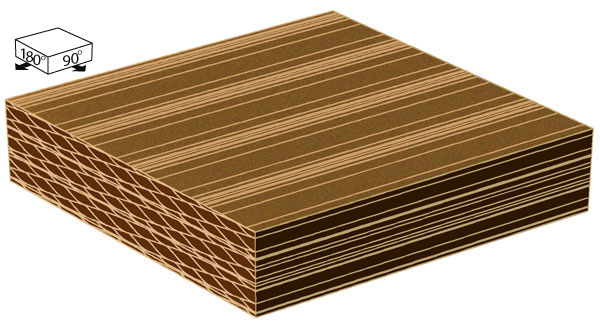Pacific Coastal and Marine Science Center
Bedform Sedimentology Site: “Bedforms and Cross-Bedding in Animation”


FIG. 13. Structure formed by bedforms climbing at an angle that is fluctuating but always positive. This structure is an example of Allen's (1982) pattern IV ripple climb.
RECOGNITION: This structure is very useful for reconstructing bedform morphology, because the bedding indicates the plane of the generalized depositional surface. Although the complete depositional surface is not preserved unless the bedforms climb at a stoss-depositional angle, the generalized depositional surface is approximated by the plane at which the angle of climb simultaneously changed for adjacent bedforms (Rubin and Hunter, 1982). The bedform spacing is indicated by the distance between bounding surfaces, measured in a plane parallel to the generalized depositional surface and in a direction normal to the lines of intersection of cross-beds and bounding surfaces. As in other structures formed by variable two- dimensional bedforms, the cross-bed and bounding-surface dips plot along a single straight line through the center of the plot.
ORIGIN: This structure forms as the result of depositional episodes that cause the rate of deposition to increase and then decrease relative to the rate of bedform migration. Suitable depositional events can originate in rivers (FIG. 14), eskers (Allen, 1972), density currents, and eolian flows (Rubin and Hunter, 1982, FIG. 4D). The events can be caused by increases and decreases in flow velocity or by increases and decreases in sediment availability upstream from the depositional site.